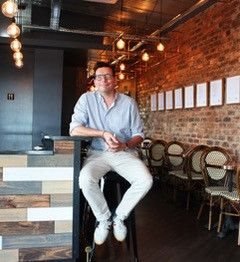The distribution of a vaccine is another example of how everything about Covid is very different if you're poor

The first difference was around lockdown. The reality is that the poor can’t lockdown.
There is no lockdown at all when there are many people living in one dwelling and several in one room, especially when the dwellings are two metres apart. There is also no lockdown when you can only afford to buy basics to last a couple of days and need to go and buy more as soon as you have money. There is also no lockdown when you have to leave the house to try and do ANYTHING you can to get that money.
The much-declared statement that during the Covid crisis we need to choose between “Money or Lives” is also one that’s patently absurd for the poor. When you are living on the bread-line, and have virtually NO money at all, a loss of income reduces yours from very little, to none at all. And it may come as a shock to well-heeled countries and people alike to know that when you have NO money at all, people die. And not from Covid. The idea that there is a choice of some kind between “Money or Lives” is absolute nonsense, except in a world of plenty.
But by far the most severe example of how Covid is different for the poor has just arrived now that there is a vaccine.
The British are already vaccinating people (chiefly healthcare workers) and Joe Biden said yesterday that he plans to vaccinate 100 million people in 100 days. Canada has enough doses to vaccinate every single Canadian five times over. And it has recently emerged that 95% of the doses developed by Pfizer are going to First World countries, as are 100% of those produced by Modena.
Not all companies have taken this route however, the Oxford/AstraZeneca vaccine has been specifically priced at a more affordable level and more than half of their output will be going to developing countries. Unlike the other vaccines, theirs doesn’t need to be transported at super low temperatures, merely requiring normal refrigeration, which is much easier to implement in the global South.
Considering that the development of these vaccines was funded with public money, there is a strong campaign underway to force drug companies to either follow the Oxford/AstraZeneca model or to share their research and technology with the WHO, enabling them to roll it out in other countries.
So thus far, it seems like it will be a while until any of these vaccines are available in SA. But when they do start to trickle in, it will be interesting to see to whom they trickle. Will it first be made available to those who can afford it through the private healthcare system? Will it go to the politically connected? Or will there be a fairer system implemented to make sure that it first goes to those who need it most, regardless of their position on the socio-economic ladder? The way this is handled will show much about our society and how it functions. Or doesn’t.
- Taking the long way to tea: Adidas Terrex opens teahouse in Kazakhstan's Butakovskiy Gorge18 Dec 09:43
- Your mind deserves a blank space13 Oct 09:05
- Trust is Africa’s new currency: Why media leadership must go beyond metrics07 Oct 08:52
- Havas appoints Alberto Canteli as executive chairman Africa02 Oct 08:58
- Havas Red appointed as consumer PR Agency for Philip Morris South Africa15 Jul 16:34






















